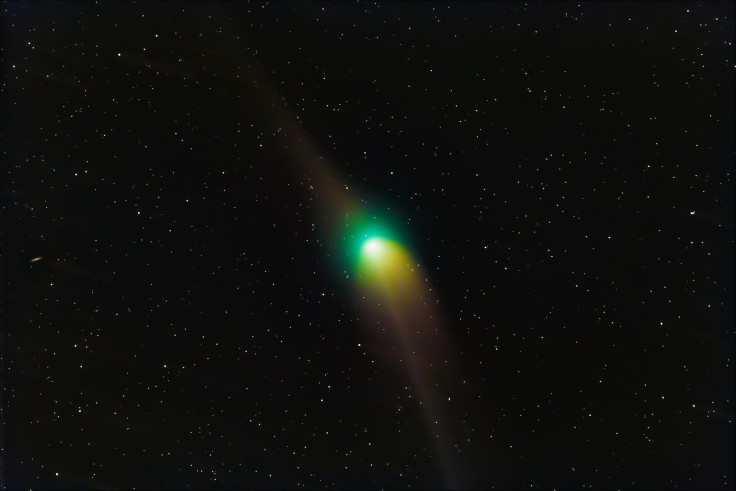
Was it an alien probe sent to observe us? A piece of advanced technology using our Sun for a gravitational boost? For weeks, speculation has swirled around 3I/ATLAS, the third known interstellar visitor to our Solar System. Proponents of one theory suggested its recent pass by the Sun would be the moment it revealed its artificial nature.
Well, that moment has passed. The comet... just kept on cometing.
A Cosmic 'No-Show': 3I/ATLAS Sticks to the Script
The PUNCH mission, a fleet of small satellites studying the Sun, spotted comet 3I/ATLAS as it emerged from the Sun's glare. The pass was a critical test for the 'alien spacecraft' hypothesis, which some suggested was more than just a comet.
The theory posited that during its perihelion (closest approach to the Sun), the object would use our star's gravity to perform an 'Oberth Maneuver' and head towards Earth.
Unfortunately for alien-hunters, the comet spectacularly failed to cooperate. Automatic tracking systems confirmed 3I/ATLAS passed its perihelion without any change to its expected trajectory. The alien spaceship theory, it seems, is dead.
Why This 'Boring' Comet Is Still Exciting Scientists
Just because it is not an alien craft does not mean it is boring. For serious astronomers, 3I/ATLAS has been a thrilling subject.
It is only the third known interstellar object tracked in our Solar System, following 1I/'Oumuamua (2017) and Comet 2I/Borisov (2019). This new visitor is significantly more active than its predecessors.
It may also be incredibly ancient, perhaps twice as old as our own Solar System. The recent solar conjunction spurred even more activity, with reports of a peculiar 'anti-tail' and even a possible jet.
The Agonising Wait for a Closer Look
While data is still being gathered and analysed, getting clear images has been a community effort. An online member of the public, not NASA, first shared the new image from PUNCH's automatic data pipeline.
The continued US government shutdown (30 days and counting) has hampered official releases, but the automatic systems are still working.
Now, 3I/ATLAS is on its way out of the Solar System, currently within the orbit of Mars. But humanity is not finished studying it.
The European Space Agency (ESA) will use its Jupiter-bound mission, JUICE, to observe the comet in November. Olivier Witasse, an ESA Project Scientist, previously told IFLScience about the plan.
'JUICE will observe 3I/ATLAS between 2 and 25 November. We will be using five instruments... We are far away (0.5 Astronomical units), therefore, only remote sensing'.
Comet 3I Atlas is back in the field of view of the PUNCH WFI instruments. Here is co-added stack of all of the images from the clear filter (centered around 550nm) from October 27th.
— (@kwalsh4a.bsky.social) 2025-10-28T21:58:09.818Z
How to See the Interstellar Visitor for Yourself
There is, however, a significant catch. 'Due to the position of JUICE with respect to Earth, the data rate is very low', Witasse noted.
'We expect the data to be downloaded only in February 2026, so we need to be a bit patient'.
Thankfully, other observations will happen much sooner as the comet and Earth reach their closest point on December 19, at a distance of 269 million kilometres (167 million miles).
Amateur and professional astronomers alike will soon get their chance. From Sunday, 3I/ATLAS will be visible in the pre-dawn hours, appearing near Venus in the sky, according to some reports.







